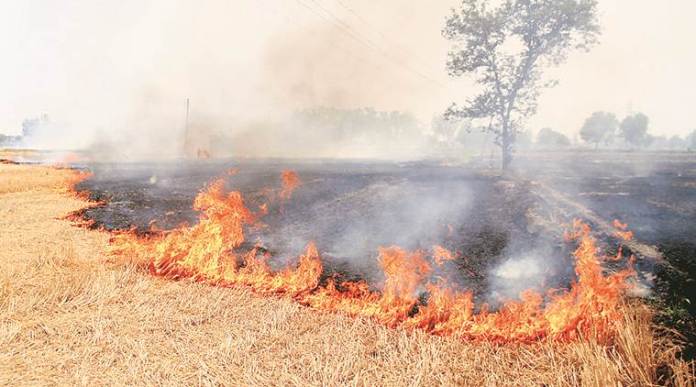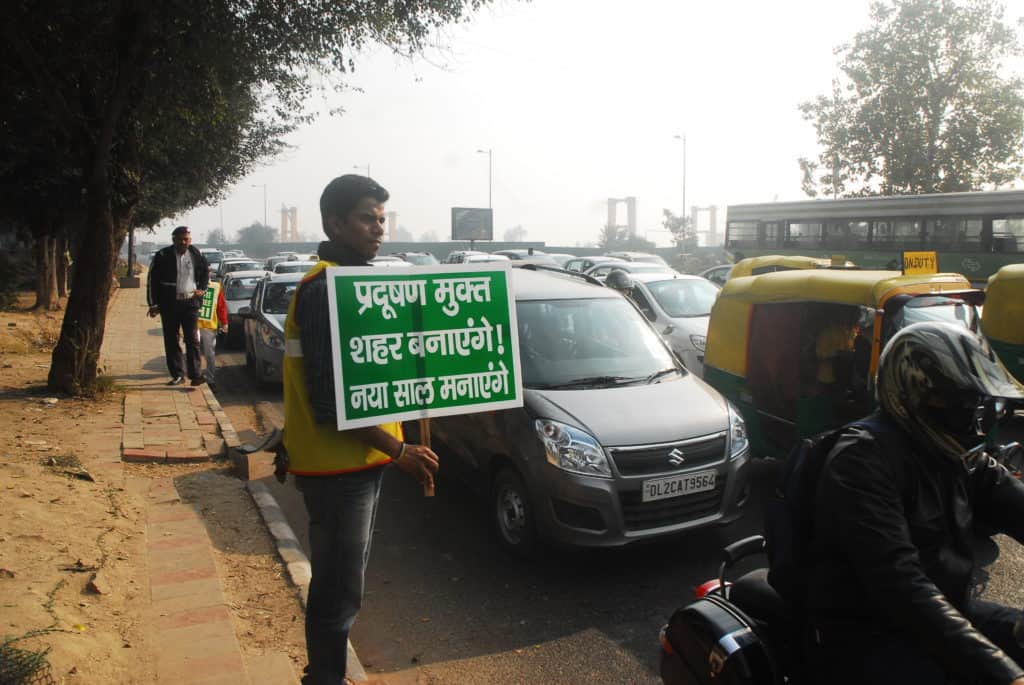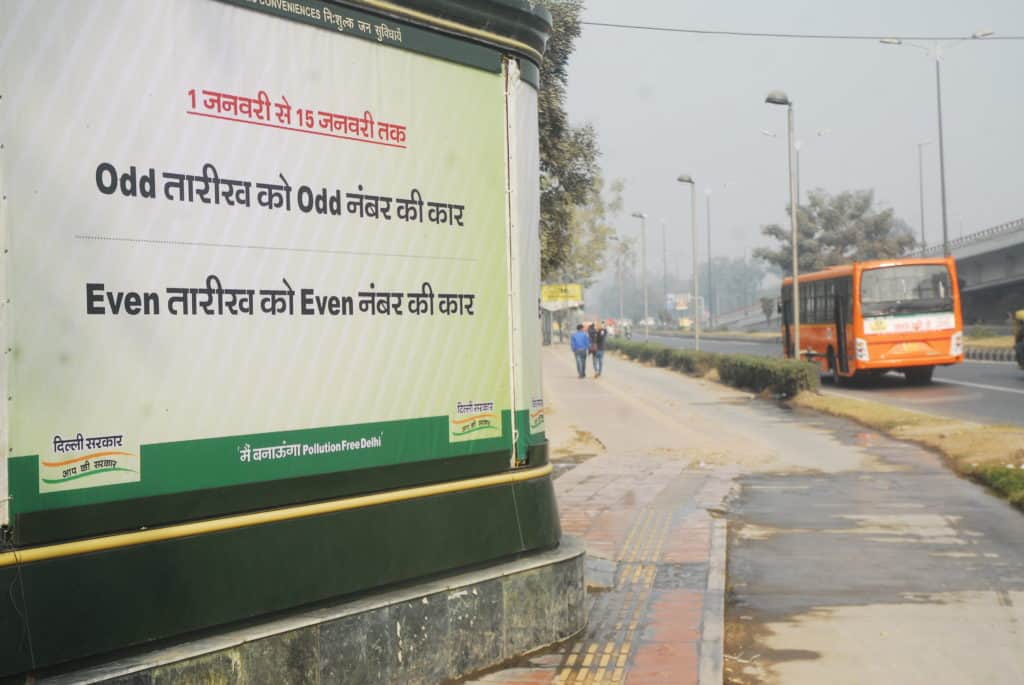“Delhi air quality has never met WHO criteria,” says Dr T.K. Joshi, Director, Centre for Occupational and Environmental Health (COEH), Maulana Azad Medical College and part of the 16-member Delhi Pollution Control Committee (DPCC) set up by the government. “It is even more stressed now and is expected to worsen”.
The worsening mostly happens during November-December, and lingers on, largely due to paddy stubble burning by farmers in Punjab and Haryana to get their fields ready for the winter wheat sowing.
Now, with satellite remote sensing data from the Indian Agriculture Research Institute (IARI) showing a five-fold increase in the number of farm fires in Punjab, Haryana, and Uttar Pradesh during the first six days of October, compared to the corresponding dates in 2019, the Delhi government has announced emergency measures from October 15th and set up a war room to monitor stubble burning and the resultant air quality in Delhi-NCR.
“The steps needed to improve air quality are not being carried out at the right scale,” says Anumita Roychowdhury, an air pollution expert and executive director at the New Delhi-based Centre for Science and Environment. “The causes of the capital’s poor air quality are well known, as are the actions needed to combat it. It isn’t rocket science.”
COVID complication
The fear is that this recurring air pollution over Delhi will make the city’s battle against COVID-19 much more difficult. “The worst contribution to pollution is combustion which releases 2.5-micron particles and these can move into the deepest part of our lungs where bronchial gas exchange takes place and carbon dioxide is released and oxygen is taken,” says Dr Joshi. “These particles damage these areas and COVID-19 attacks these very same part of the lungs.”
“Last year, nearly 50,000 cases of stubble burning were reported in Punjab,” added Sanjeev Nagpal, MD of Sampurn Agri Ventures Pvt Ltd (SAVPL) and advisor to the Union and the Punjab governments on crop resident management. “If alternative arrangements to stubble burning are not made, pollutants like particulate matters and toxic gases like carbon monoxide and methane could give rise to severe respiratory problems, which could further worsen the COVID-19 situation, as the Coronavirus also impacts the respiratory tract.”

In view of the grave situation that could result from a combination of worsening air pollution and the virus pandemic, Dr Joshi said his Committee was “trying their best to prevent stubble burning and this has been emphasised by union health minister Dr Harsh Vardhan.”
Several solutions have been proposed over the years to tackle the issue. The most recent one, billed as a game-changer if found successful, is the ‘Pusa Decomposer,’ capsule developed by IARI.
This is essentially a fungi-based liquid solution that can soften hard stubble to the extent that it can be easily mixed with soil in the field to act as compost. This would then rule out the need to burn the stubble, and also help in retaining the essential microbes and nutrients in soil that are otherwise damaged when the residue is burned.
Trials of this of Decomposer Capsule are underway in Delhi NCR (over 800 hectares) and Uttar Pradesh (10,000 hectares).
A response plan
Facing severe criticism from environmentalists, the Delhi government has now come up with a Graded Response Action Plan (GRAP) to check the already worsening air pollution in Delhi-NCR. A GRAP Task Force, led by the Central Pollution Control Board (CPCB) has said that the NCR has currently slipped into ‘poor’ air category as weather conditions were turning adverse.
Measures under this GRAP include:
- Ban on Diesel Generator (DG) sets in NCR,
- Mandatory compliance with dust control measures in large construction projects
- Use of authorised fuel alone in industries
- Night patrolling to check waste burning, industrial and dust emissions
- Mechanised sweeping of roads day and night
- Water sprinkling to control dust.

Meanwhile, directions have been sent to chief secretaries of Delhi, Haryana, Uttar Pradesh and Rajasthan on implementing pollution control measures under GRAP by the Supreme Court mandated Environment Pollution (Prevention and Control) Authority (EPCA).
The EPCA is a 20-member committee set up by the Central Government after the Supreme Court order of January 7, 1998 and is chaired by former Secretary Bhure Lal. The objective is to monitor and control environmental pollution in the National Capital Region. It is also assisting the Supreme Court in other environment related matters in the NCR.
The war room set up to ensure that these measures are implemented comprises a 10-member expert team supervised by two senior scientists of the Delhi Pollution Control Committee (DPCC). The war room is equipped with high-end technology and has three large screens on which concentrations of different pollutants, the status of 13 air pollution hot spots in Delhi, and satellite images from NASA and ISRO of stubble burning will be monitored, said Delhi Environment Minister Gopal Rai.
“We will monitor and act on complaints filed by the people through the Green Delhi application, which the Chief Minister will launch in the coming days,” said Rai. “We will also monitor road sweeping and water sprinkling work done by the MCD through GPS. Daily reports will be sent to the CM, myself and the Environment Secretary”.
A meeting on October 1st of the Environment and Forest Ministers of five states chaired by Environment, Forest and Climate Change Minister, Prakash Javadekar reviewed the air pollution conditions, which have, in recent years, been a recurrent concern in winter in Northern India, especially in Delhi-NCR.
After the nearly two-hour meeting, Javadekar said the centre and states will work together to implement steps to combat air pollution, but more needs to be done. Javadekar added that the centre has allotted Rs 1700 crore to the states for stubble management.
Preventing a health emergency
Hotspots of stubble burning have been identified in UP, Haryana and Rajasthan too and the state governments have been directed to pay more attention to these. State action plans have been made and discussed which will be implemented.
Javadekar added that the Delhi government has been directed to take necessary action on the 13 hotspots in Delhi so as to reduce the air pollution in the capital. Fifty teams of CPCB will be deployed in Delhi NCR region in the next few weeks for this.
It will be interesting to recall here that on November 2nd last year, Delhi had declared a health emergency due to severe air pollution which had led to closure of educational institutions, especially schools, since children were more susceptible to the health effects of breathing polluted air.
On November 3 2019, levels of PM 2.5 in Delhi’s atmosphere, polluting particles 30 times finer than one human hair and capable of entering the bloodstream and sickening/killing people, were recorded at a 24-hour average of 625 microgram per cubic metre (µg/m3), the season’s worst. This was 24 times higher than the World Health Organization (WHO)-prescribed safe levels of 25 µg/m3 (24-hour average) and nine times higher than the laxer Indian standard of 60 µg/m3 (24-hour average)!

The Delhi government had launched the ‘odd-even’ scheme, on November 4 2019, to reduce vehicular pollution. But this scheme did little to improve air quality, as confirmed by Sagnik Dey, an associate professor at the Centre for Atmospheric Sciences and coordinator of the Centre of Excellence for Research on Clean Air at IIT, Delhi, who studied the efficacy of this exercise. Yet, it was implemented again in April.
This year too this could happen. And just maybe the other measures will help in keeping air pollution levels below last year’s figures. But for COVID patients, even that could prove dangerously high.